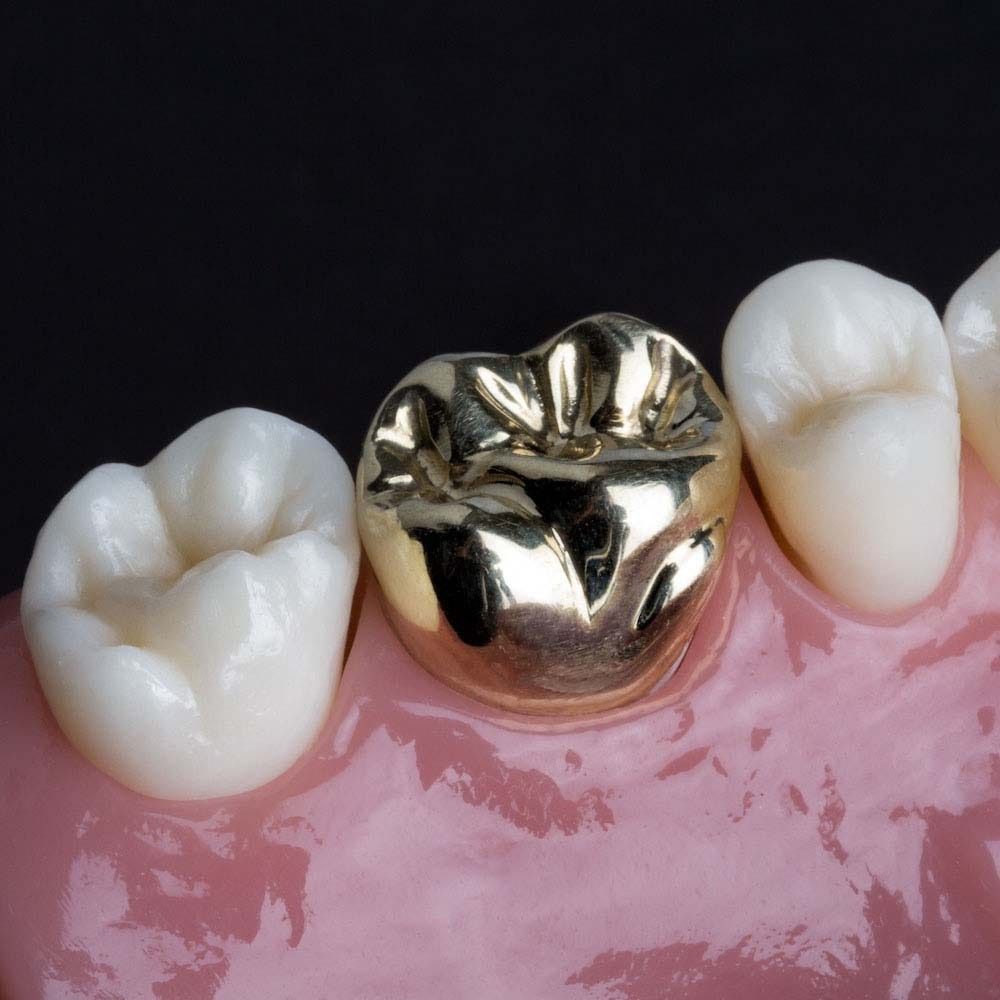
Dental crowns are often recommended in restorative dentistry when a tooth has been damaged or decayed to the point where a filling will not suffice. In dental laboratories, these crowns are fabricated to replicate the shape, size, and color of natural teeth, and they function to restore and strengthen the patient’s dental health while improving the aesthetics of their smile. Here are four different types of crowns that are commonly made in dental laboratories:
1. Ceramic Crowns
Ceramic crowns, often made from porcelain, are among the most commonly used types of crowns. They are well-liked for their ability to blend seamlessly with the surrounding natural teeth because of their translucent and color-matching properties. These crowns are usually used for the restoration of the front teeth due to their superior aesthetic appearance.
Creating a ceramic crown entails developing a solid, tooth-colored cap from high-grade dental porcelain that can imitate the natural light-reflecting properties of a tooth to a remarkable extent. Dental technicians create these crowns by hand-molding the porcelain to match the removed tooth’s shape, size, and color. They then employ a special furnace to harden the material.
While their aesthetic appeal is unmatched, ceramic crowns are not as durable as metal or metal-fused-to-ceramic crowns and may not be the best choice for teeth that require a high load bearing capacity, such as molars.

2.Metal Crowns
Metal crowns are robust and durable, making them an excellent long-term solution. Metal crowns are generally made from “base metal” alloys, gold alloys, or other metal alloys including palladium.
The most significant advantage of metal crowns is their strength and longevity. Metal crowns can withstand biting and chewing forces very well and tend to last the longest in terms of wear down. They require the least amount of your natural tooth to be removed and are the least likely to wear away over time.
The biggest drawback to metal crowns, in most patients’ eyes, is the metallic color. For this reason, they’re often used for molars and teeth that aren’t visible when you smile.

3.Porcelain-Fused-to-Metal Crowns
These crowns combine the durability of metal with the aesthetic appeal of porcelain. The base of the crown is made from metal to which is fused a porcelain outer shell.
The benefit of porcelain-fused-to-metal crowns is a pleasing aesthetic look coupled with the robustness associated with metal crowns. These crowns are a great choice for front or back teeth or when a bridge requires the strength provided by metal.
The downsides include the possibility of the metal core showing as a dark line along the gum, especially if your gums recede over time. They also wear down the opposite teeth more than either metal or ceramic crowns.

4.All-Resin Crowns
All-resin crowns are a cost-effective option as the materials used are less expensive. They are created by infusing tooth-colored resin into a mold in the shape of the required crown. These crowns can be made to match the color of the surrounding teeth and can be made quite fast.
However, they wear down with time due to grinding, and they have a higher tendency to fracture than crowns made from other materials. They can be a good choice for temporary crowns or for the replacement of lost baby teeth.

In conclusion, each type of dental crown has its unique characteristics and specific applications. It’s worthy to note that in the case of crowns too, one size doesn’t fit all, rather the choice of crown is highly dependant on the patient’s dental condition, their aesthetic requirements, budget, and at times, personal preference. The strength and aesthetic considerations should be weighed in relation to each patient’s needs.
An individual’s oral care habits, the location of the affected tooth, the amount of natural tooth left, a person’s exposure to allergenic metals, and the cost factor also come into play when creating and selecting a crown.
It’s vitally important to discuss the pros and cons of each type of crown with dental professionals, who can provide advice tailored to each person’s unique dental needs. They can provide the pros and cons related to specific materials and the key qualities of each type of crown, ensuring that the final choice of the crown meets the patient’s oral health priorities and lifestyle considerations.
Ultimately, the predominant objective is to restore oral functionality, preserve the health of the oral environment, and provide an aesthetically pleasing result that will give patients a reason to smile. Skeuomorphism, biocompatibility, and resilience are factors that should be considered while choosing the type of dental crown. Always remember the principle goal: achieving an resplendent smile and healthy oral environment that boosts the patient’s confidence and enhances their lifestyle.




Leave a Reply